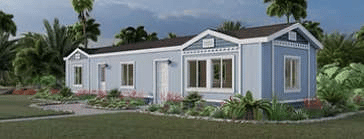ADUs are defined as additional dwelling units. ADUs’ intended use, such as adding to existing living space or generating income from rentals Overview of prefab ADUs.
Prefab ADU advantages
- Faster construction time
- a more affordable
- is portable and adaptable to various settings
- a higher level of energy efficiency
- Compared to homes that are constructed on-site, factory-built homes can have a higher level of quality and consistency due to the controlled building environment.
- Accessory dwelling unit prefab can be built using sustainable practices and eco-friendly materials, which can increase their energy effectiveness.
Options for Design and Customization
- There are numerous design possibilities.
- Possibility of customization to meet particular requirements and tastes
- Examples of various prefabricated ADU types, including detached homes, homes that were once garages, and attached homes
- Numerous prefab ADUs are available in numerous sizes, designs, and configurations, giving homeowners more choices to meet their individual requirements.
- Prefab ADUs can also be designed to blend seamlessly with the existing architecture of the primary residence.
Building codes and zoning laws
- a description of the zoning laws and building codes that apply to ADUs
- How prefabricated ADUs might impact compliance
- Some pointers for navigating the application procedure
- Prefab ADUs that are manufactured in a factory must comply with the same building codes and zoning regulations as site-built homes.
- Homeowners should check with their local building department to make sure their prefabricated ADU complies with all necessary codes and regulations.
- Working with a prefab ADU manufacturer or installer with knowledge of the application process may be beneficial.
Comparison of Prices with Traditional ADUs
- Prefab ADUs and traditional ADUs are priced differently.
- Cost-affecting variables include size, design, and location.
- Savings potential from prefabricated building
- Because accessory dwelling unit prefab are constructed in a controlled factory setting, which can reduce labor and material costs, they may be more affordable than conventional ADUs constructed on-site.
- A number of elements, including the unit’s size and design as well as any additional features or finishes, will affect the price of a prefabricated ADU.
- To determine which prefab ADU manufacturer and model is the most affordable while still meeting their needs, homeowners should compare prices.
Conclusion
- Key points summarized
- Final thoughts on the potential and advantages of prefabricated ADUs
- Encourage readers to think about an ADU that is prefabricated as a viable option for their upcoming project.
- Prefab ADUs have many advantages over conventional ADUs, such as quicker construction times, lower costs, higher energy efficiency, and a wider range of design options.
- Homeowners should speak with their local authorities and work with skilled professionals to make sure that their prefab ADU complies with all necessary codes and regulations because zoning and building regulations differ depending on location.
- Prefab ADUs are, in general, a great choice for homeowners looking to add extra living space, generate rental income, or host elderly family members or visitors.



